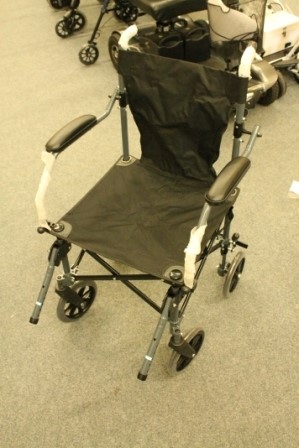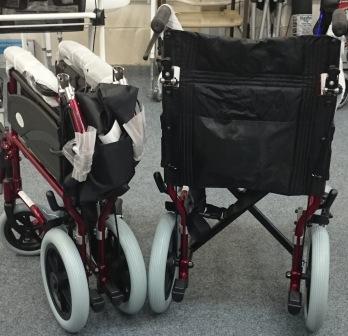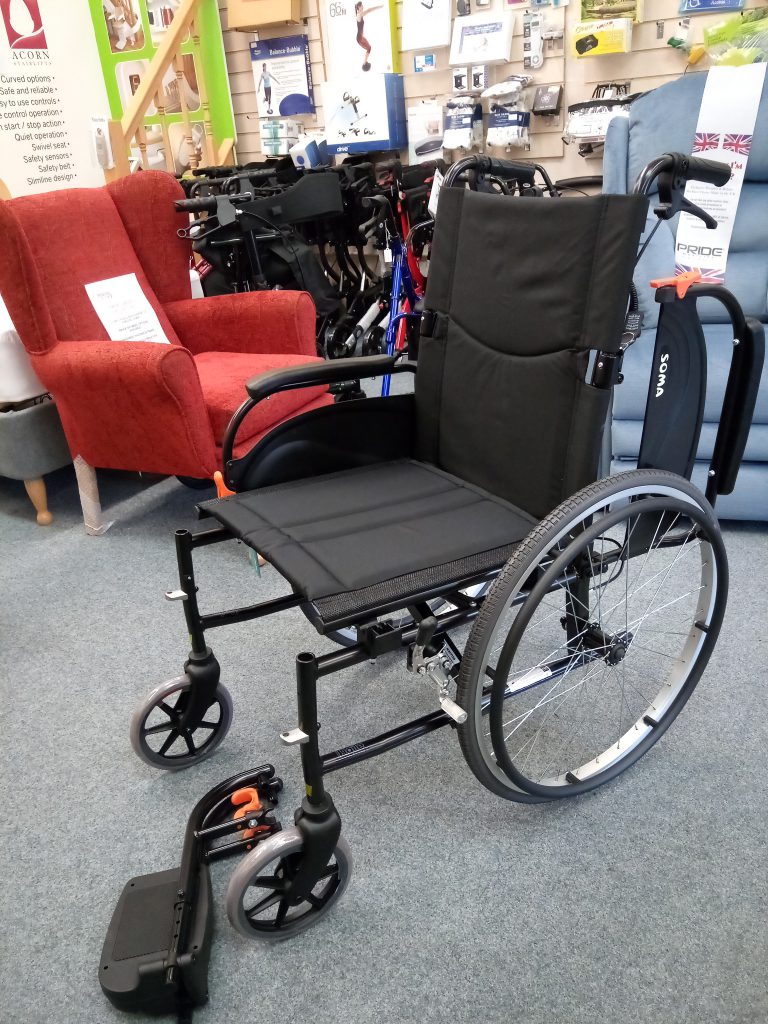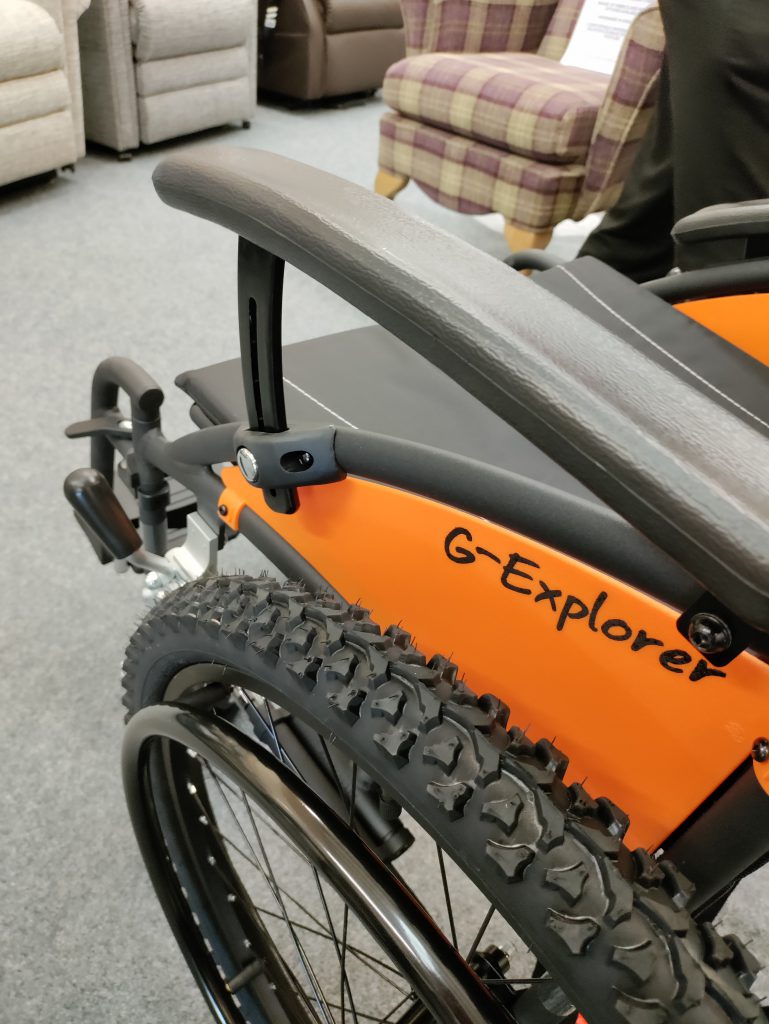When it comes to wheelchairs, there are a lot of things to think about. One of the first, most striking thing about a wheelchair is the size of wheels. Wheelchairs fall into three categories: Transport chairs; Transit or Attendant Wheelchairs and Self-Propelled Wheelchairs.

Transport Wheelchairs – Propelled by a caregiver, these chairs have castors all round, usually very basic with no brakes, etc. Fine for very flat areas, for example moving round a hospital and when the user is only in it for very short periods of times. Tend to be very lightweight and portable.

Attendant or Transit Wheelchairs – these are also propelled by a caregiver, however they have proper wheels at the back usually 12″ or 14″ which gives a more comfortable ride for the user. These wheels may be pneumatic (air) tyres or solids, the solid tyres may be very hard or a rubberised tyre for a more comfortable ride. These wheelchairs are usually equipped with brakes to the rear to make it easier for the person pushing to control the wheelchair. They can be occasional use, lightweight wheelchairs, ideal for days outs, appointments and holidays through wheelchairs perfect for everyday use.

Self-Propelled Wheelchairs – these are designed to be predominately controlled and propelled by the user. Larger wheels – usually between 20″ and 24″ – to the rear have a handrim to allow easy grip when manoeuvring without having to touch the actual wheels. Self-propelled wheelchairs allow for more independence for the user and when you need a wee bit extra help, there are still handgrips at the rear to let a friend give you a helping hand. The brakes are located at the front of the wheelchair for easy access by the user. Some self-propelled wheelchairs do have additional brakes to the rear but the expectation would be that the user would be in control. Using a self-propelled wheelchair does require upper body strength but if you are able to do this, then it has the advantage of keeping you fitter.

Self-propelled wheelchairs are usually wider than the equivalent seat width attendant wheelchair and with the larger wheels, it can also be more cumbersome and heavy for transporting and storage. However, most modern self-propelled wheelchairs have pop off wheels making the weight more manageable and easier to store, although obviously this involves a bit more faff.
Deciding which wheelchair is best for you is not an easy task and it can all get a little confusing. If you are in doubt about what might suit you, it is always best to get advice from a reputable dealer such as Mobility Stirling who can let you try a range of wheelchairs as well as giving you advise and ensuring the wheelchair is set up properly for use.
It’s definitely worth a bit of time and effort to find what is right for you!